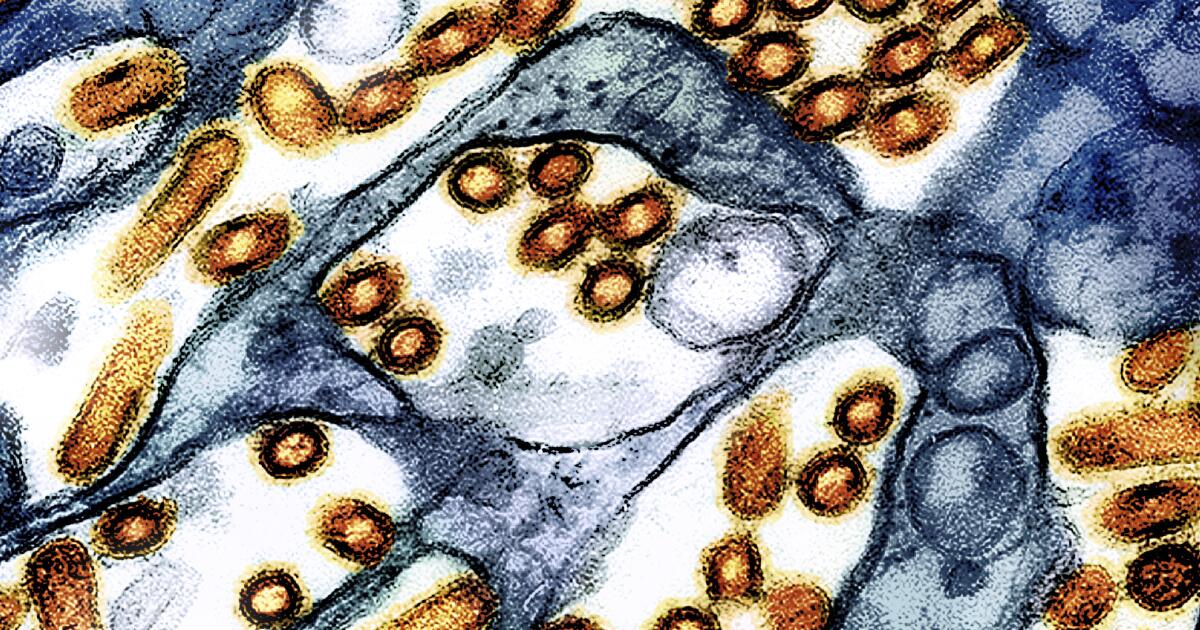Ohio
Wasserman: Jim Harbaugh won a title, revived the Ohio State rivalry — stop with the ‘cheating’ crying

Five years ago, I sat in the Michigan Stadium press box following Ohio State’s 56-27 blowout of Michigan. It wasn’t a game, let alone The Game. One team was competing for national titles, the other was stuck in a state of mediocrity. One team was recruiting at peak levels, the other couldn’t even find a quarterback. So I wrote that Urban Meyer killed the rivalry.
It’s funny to look back at days like that given what we now know about Jim Harbaugh, the national champion and the new head coach of the Los Angeles Chargers. Through the first five years of his Michigan tenure, he was viewed as a failure. He almost got fired after the 2020 season.
Everything is so different now as Harbaugh is leaving Ann Arbor a champion and the man primarily responsible for reviving the greatest rivalry in college football. Ohio State fans loathe him. They’ll call him a cheater or a fraud. But nothing or nobody will be able to take away the fact that he is one of the rare high-profile coaching hires who actually lived up to — no, exceeded — the immense hype.
Those who stay will be champions. Harbaugh, a former Wolverines quarterback and the epitome of a Michigan Man, proved that statement — easy to mock a few years ago — to be true.
For that, he’s a coaching legend. Forever.
For many of you, reading that was difficult. Some of you have probably already scrolled to the comments section below to recycle cheating jabs. You can’t mention Michigan’s national title run this year without also acknowledging there is hard evidence the Wolverines engaged in a cheating scandal.
Harbaugh, now in the NFL, left Michigan before the NCAA had its final word on the matter. Some will call him a coward for leaving now, even if he had shown interest in returning to professional football before the spying scandal came to light. Like everything with Harbaugh — his personality, his tactics, his behavior toward the NCAA, his exit — it’s complicated.
Nobody is pretending it didn’t happen. It happened. There may be consequences for it. But OSU fans crying about cheating after the run Michigan just went on after the scandal is weak. That’s my opinion. https://t.co/Ci007Mk8j1
— Ari Wasserman (@AriWasserman) January 25, 2024
But here’s what’s not complicated: If you’re still yelling about cheating or delegitimizing what Harbaugh and Michigan did this year, you didn’t pay attention to the run. It’s weak. It’s crybaby-ish. It’s, frankly, fragile.
Yet, it’s so profoundly beautiful.
Why? Because the best rivalry in college football is back and perhaps more heated than it’s been during any period since the Ten Year War. Winning a national title wasn’t the only thing Harbaugh accomplished. Getting us here today — villainizing or coveting him and the Michigan program — is the real success.
GO DEEPER
What does Jim Harbaugh to the Chargers mean? How does Michigan respond?
There’s no denying Michigan broke some rules. Though it’s hard to determine what (if anything) the NCAA will do in the coming months, whatever it decides will be warranted. Crime and punishment. The results of the season can’t — and shouldn’t — take away from what Connor Stalions did or the scheme Michigan ran. Stalions appeared to dress up like a Central Michigan coach with spy Ray-Bans recording the Michigan State sideline. In no other sport could something so ridiculous — and, honestly, hilarious — happen. But if it did happen, it should be penalized. It likely will, to some extent. I’m not dismissing or glorifying the transgressions.
But that’s not why Michigan won the national title. Two days later, NCAA president Charlie Baker even said the Wolverines won it all “fair and square.” Even if you don’t want to take Baker’s comments seriously, you have to acknowledge Michigan beat Penn State, Ohio State, Iowa, Alabama and Washington after the scandal broke. Those were the only games Michigan could have possibly lost on its schedule, cheating or not.
The response to Michigan’s success from Ohio State is what you’d expect from a proud program tired of losing to its rival. The Buckeyes have had one of the most successful offseasons in recent memory with the additions of key portal players, including quarterbacks Will Howard and Julian Sayin, running back Quinshon Judkins, interior offensive lineman Seth McLaughlin, and, of course, safety Caleb Downs. The pocketbook was opened, and the Buckeyes mean business.
That’s what the response should be. Not, “wahh! wahh! Michigan cheated!” More like, “This year is our year to take back what we believe is ours.”
That’s what every year in this rivalry should be. It wasn’t that when Harbaugh took over. It wasn’t that in Year 5 of the Harbaugh era. Now it is. It should be laced with hate, passion, butterflies and 365 days of obsession. That’s what makes this rivalry, this sport so great. And if you’re using the “they cheated” stuff as a way to get under your rival’s skin while they’re hoisting the sport’s most coveted trophy, all power to you. It’s not the flex you think it is or even the truth, but go off, King. After all, this is a rivalry and it’s supposed to be contentious.
Harbaugh is one of the most interesting coaches this sport has ever seen. These may be distant memories to some, but it doesn’t seem that long ago that we were watching him host satellite camps, climb trees, sleep over at recruits’ houses and tell his players not to eat chicken because “it’s a nervous bird.” Harbaugh is a bizarre man, and Chargers fans are about to get a front-row seat to the journey.
College football is worse off without him. But Harbaugh leaves a champion. More than that, he won that championship with a roster built the Harbaugh way, not the Ohio State way. I would have steadfastly told you a year ago that what Harbaugh accomplished this year was impossible. I was wrong, which is another reminder that sports are about the unpredictable.
Harbaugh is nothing if not unpredictable. I’m thankful he was at Michigan for these past nine years because, wow, what a roller coaster that was. And as we go into this offseason — a few years removed from that 2019 postgame column I wrote — we have the most coveted thing about our sport back: The Game.
All because of him.
(Photo: Jamie Schwaberow / Getty Images)

Ohio
How many days since Ohio State football last beat Michigan?

It’s really been that long since Ohio State last beat Michigan?
In a four-game matchup drought against its bitter rival, the Buckeyes have not seen a victory against the Wolverines yet this decade. In 2024, No. 1 Ohio State lost 17-10 to an unranked Michigan team in one of the most drastic upsets in Ohio State football history.
The last time the Buckeyes beat Michigan was Ryan Day’s sole win in the rivalry as Ohio State’s coach.
How many days has it been since Ohio State football beat Michigan?
On the day of The Game, it has been 2,191 days since Ohio State football last beat Michigan.
When was the last time Ohio State football beat Michigan?
Ohio State last beat Michigan in the 2019 season in blowout fashion. It was also the last time Ohio State ranked as a No. 1 seed in The Game; the Buckeyes won 56-27 against a No. 13 Michigan team.
The Buckeyes had a star-studded lineup of future NFL players and were led by a big day from quarterback Justin Fields, who threw for 302 yards and four touchdowns in the victory. While Michigan opened up scoring, Ohio State marched downfield with big runs from J.K. Dobbins, who finished with 211 yards and four rushing touchdowns.
Up 21-13 halfway through the second quarter, Ohio State recovered a key fumble from Michigan quarterback Shea Patterson, who botched a snap in the red zone. Fields found wide receiver Garrett Wilson for a 47-yard catch on the ensuing drive to get to the Michigan 5-yard line, with Dobbins scoring a touchdown a play later.
Ohio State led 28-16 out of the first half and scored touchdowns on its first two drives of the third quarter with two more touchdown passes from Fields. The Buckeyes led 42-19 entering the fourth quarter and won 56-27, the largest scoring margin in the rivalry’s past 10 years.
Ohio
Ohio State vs Pitt live score updates, highlights, how to watch game
PITTSBURGH — The first road test of the season has arrived for the Ohio State men’s basketball team.
After comfortably beating five mid-major teams and squeezing out a one-point win against Notre Dame, the Buckeyes will finish out a home-and-home series against the University of Pittsburgh with a Black Friday road game against the Panthers. The game is Ohio State’s first of five straight against high-major opponents as the Buckeyes now get to see how what they have done through six games stands up against more challenging competition.
Pitt is 4-3 and has lost two straight. Most recently, the Panthers lost at home to Quinnipiac 83-75 on Nov. 23
Follow along with all the action at our live Dispatch game blog below.
Senior center Christoph Tilly sat out the second half of Ohio State’s game against Mount St. Mary’s for what was termed a precautionary situation, but he is not on Ohio State’s official injury report for tonight’s game.
The Buckeyes are at full strength for the Pitt game.
Ohio State vs Pitt score updates
This section will be updated when the game begins.
- Date: Friday, Nov. 28
- Start time: 7 p.m. ET
The Ohio State vs Pitt game starts at 7 p.m. from the Petersen Events Center in Pittsburgh.
- TV Channel: ESPN
- Livestream: ESPN
- Radio: WBNS-FM (97.1)
Ohio State vs. Mount St. Mary’s will air nationaack Kizer and former Ohio State captain Joey Lane will call the game from the Jerome Schottenstein Center. Streaming options for the game include Fubo, which offers a free trial to new subscribers.
Stream Ohio State vs. Pitt
- Series record: Ohio State leads 15-12
- Ohio State’s last win: Dec. 6, 1961 (99-79, at Pitt)
- Pitt’s last win: Nov. 29, 2024 (91-90, OT, at Ohio State)
Odds courtesy of BetMGM as of Thursday, Nov. 27
Spread: Ohio State by 5.5
Over/under: 146.5
Moneyline: Ohio State (-225); Pitt (+185)
Ohio State men’s basketball schedule
- Oct. 26 – Ohio University (exhibition) W, 103-74 (takeaways)
- Nov. 3 – IU Indy, W, 118-102 (takeaways)
- Nov. 7 – Purdue Fort Wayne, W, 94-68 (takeaways)
- Nov. 11 – Appalachian State, W 75-53 (takeaways)
- Nov. 16 – Notre Dame, W 64-63 (takeaways)
- Nov. 20 – Western Michigan W, 91-58 (takeaways)
- Nov. 25 – Mount St. Mary’s W, 113-60 (takeaways)
- Nov. 28 – at Pitt
- Dec. 6 – at Northwestern
- Dec. 9 – Illinois
- Dec. 13 – vs. West Virginia (Cleveland Hoops Showdown, Cleveland)
- Dec. 20 – vs. North Carolina (CBS Sports Classic, Atlanta)
- Dec. 23 – Grambling State
- Jan. 2 – at Rutgers
- Jan. 5 – Nebraska
- Jan. 8 – at Oregon
- Jan. 11 – at Washington
- Jan. 17 – UCLA
- Jan. 20 – Minnesota
- Jan. 23 – at Michigan
- Jan. 26 – Penn State
- Jan. 31 – at Wisconsin
- Feb. 5 – at Maryland
- Feb. 8 – Michigan
- Feb. 11 – USC
- Feb. 14 – vs. Virginia (Nashville Hoops Showdown, Nashville)
- Feb. 17 – Wisconsin
- Feb. 22 – at Michigan State
- Feb. 25 – at Iowa
- March 1 – Purdue
- March 4 – at Penn State
- March 7 – Indiana
Buy Ohio State vs. Pitt men’s basketball tickets
Ohio State men’s basketball beat writer Adam Jardy can be reached at ajardy@dispatch.com, on Bluesky at @cdadamjardy.bsky.social or on Twitter at @AdamJardy.
Ohio
Arvell Reese: Ohio State’s hybrid linebacker built for the modern game | Sporting News

If you’re looking for the prototype of the modern college football linebacker, look no further than Ohio State’s Arvell Reese. At 6’4″, 243 pounds, Reese brings a rare blend of size, power, and burst that makes him a nightmare for opposing offenses. The junior’s 4.52 speed in the 40-yard dash shows up constantly on film, he closes gaps, hawks down ball carriers, and disrupts backfields with effortless range.
Reese has racked up 59 tackles and 6.5 sacks this season, and those numbers only tell part of the story. What makes him special is his versatility. Ohio State uses him as a true hybrid linebacker, letting him roam sideline to sideline, crash off the edge as an elite pass rusher, and diagnose plays before they fully develop. His instincts are among the best in the country, he sees angles faster than quarterbacks expect and plays with a strength that overwhelms tight ends and backs in protection.
For the diehard fan, Reese’s tape jumps out immediately: violent hands, controlled aggression, and positional fluidity. For the casual fan, he’s the kind of player who makes splash plays that swing momentum; forced pressures, backfield chaos, sudden stops in space.
In an era where defenses need athletes who can do everything, Arvell Reese is the blueprint. Ohio State has a special one.
MORE COLLEGE FOOTBALL NEWS
-

 Science1 week ago
Science1 week agoWashington state resident dies of new H5N5 form of bird flu
-

 Business4 days ago
Business4 days agoStruggling Six Flags names new CEO. What does that mean for Knott’s and Magic Mountain?
-

 New York1 week ago
New York1 week agoDriver Who Killed Mother and Daughters Sentenced to 3 to 9 Years
-

 World1 week ago
World1 week agoUnclear numbers: What we know about Italian military aid to Ukraine
-

 Politics2 days ago
Politics2 days agoRep. Swalwell’s suit alleges abuse of power, adds to scrutiny of Trump official’s mortgage probes
-

 Northeast1 week ago
Northeast1 week agoCamelot or Cringe?: Meet JFK’s grandson turned congressional candidate for the scrolling generation
-

 Ohio4 days ago
Ohio4 days agoSnow set to surge across Northeast Ohio, threatening Thanksgiving travel
-

 Detroit, MI1 week ago
Detroit, MI1 week agoThompson: Detroit Riverfront Conservancy leadership has a lot to prove





















